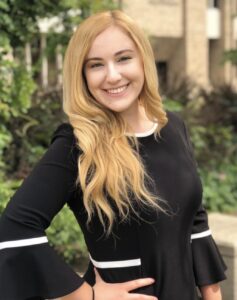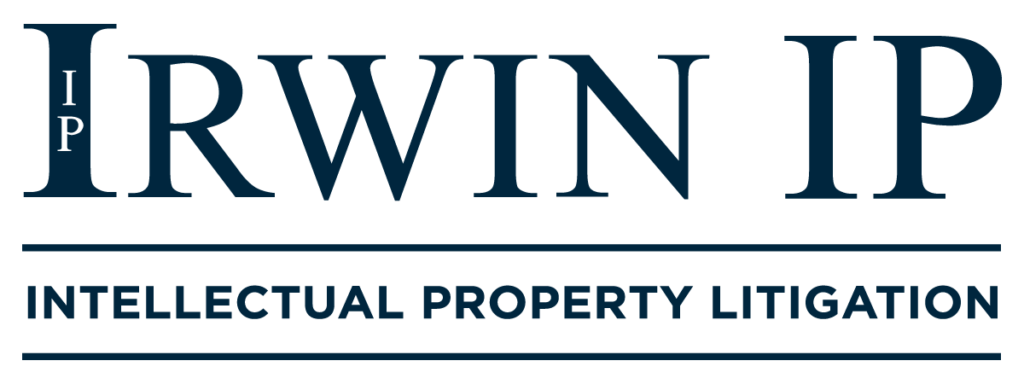The Court of Appeals for the Federal Circuit (CAFC) recently clarified that communications sent into a forum from without—threatening suit, or proposing settlement or licenses—can be sufficient to establish personal jurisdiction. In Trimble Inc. v. PerDiemCo LLC, the CAFC reversed the Northern District of California’s (N.D. Cal.) dismissal of Trimble’s declaratory judgment action, clarifying that its Red Wing decision did not, by default, preclude personal jurisdiction, where a party deliberately reaching out beyond its home and into another forum twenty-two times over three months passed personal jurisdiction muster.
In deciding Red Wing Shoe Co. v. Hockerson-Halbertstadt, Inc., 148 F.3d 1355 (Fed. Cir. 1998), the CAFC stated that personal jurisdiction did not arise “solely by informing a party” located there of infringement, indicating such contacts failed to meet due process. PerDiemCo. successfully argued via Red Wing that demand letters and related communications did not support jurisdiction. Reversing on appeal, the CAFC, citing Ford Motor Co. v. Mont. Eighth Jud. Dist. Ct., 141 S. Ct. 1017, 1024 (2021), focused the analysis on the nature and extent of the relationship between defendant and the forum state.
PerDiemCo holds a number of patents generally related to geofencing. It has a single employee, based out of Washington D.C., and an office in the Eastern District of Texas. In October 2018, PerDiemCo sent a demand letter to a wholly owned Trimble subsidiary in Iowa, attaching an unfiled Northern District of Iowa complaint asserting infringement and proposing negotiations. The subsidiary forwarded the materials to Trimble’s Chief IP Counsel, a Colorado resident, who identified himself as the negotiation lead and accepted the offer to enter into licensing discussions. Notably, Trimble is headquartered in the N.D. Cal.. Negotiations continued over three months, with PerDiemCo sending at least twenty-two communications to Trimble. After Trimble filed for declaratory judgment in the N.D. Cal., PerDiemCo successfully moved to dismiss, arguing Red Wing precluded personal jurisdiction based on demand letters.
The CAFC reversed the district court’s decision, finding that PerDiemCo’s acts demonstrated purposeful availment by deliberately reaching out beyond its home and the claims were related to such contacts. Stepping through the Supreme Court’s five fairness considerations identified in Burger King Corp. v. Rudzewicz, 471 U.S. 462 (1985) and World-Wide Volkswagen Corp. v. Woodson, 444 U.S. 286 (1980), the court determined that the burden on the Washington D.C. defendant was slight to litigate in California versus Texas, that California had a significant interest in protecting residents from infringement claims, that California-resident Trimble had an interest in the convenient nearby federal court, that interstate judicial efficiency did not counsel against jurisdiction, and that social policy differences were not implicated where federal patent law governed. In distinguishing Red Wing’sfacts and applying Supreme Court precedent, the CAFC (a) confirmed that patent infringement personal jurisdiction analysis is the same as other civil cases and that there is no special personal jurisdiction analysis for patent cases; and (b) rejected a rule that demand letters could never give rise to personal jurisdiction.
On remand from the Federal Circuit (the “CAFC”), the Eastern District of Texas (“the district court”) granted-in-part Network-1 Technologies, Inc.’s (“Network”) Motion for Judgment as a Matter of Law (“JMOL”) or New Trial because Hewlett-Packard Company, Hewlett Packard Enterprise Company (jointly “HP”) could not corroborate the testimony of the system’s creator as to the public availability of the system to prove that the system was prior art.
In 2011, Network brought a patent infringement case against HP for allegedly infringing claims in U.S. Patent No. 6,218,930 (the “’930 patent”) relating to power over ethernet. At trial, HP argued the ’930 Patent was invalid as obvious through the combination of four references: (1) the Fisher system, (2) the Fisher patents, (3) Woodmas and (4) Chang. The jury found HP did not infringe and that the ’930 Patent was obvious. After trial, the district court denied Network’s motion for a new trial on infringement but granted its request for JMOL on validity. In granting Network’s JMOL, the district court held HP did not show the Fisher system was prior art when it failed to corroborate the testimony of the system’s creator. On appeal, the CAFC vacated and remanded the district court’s judgment on non-infringement by holding the district court misconstrued a claim term. The CAFC also vacated and remanded the district court’s decision granting Network’s JMOL on validity.
On remand the district court examined whether Network’s JMOL or new trial should be granted. Network made three arguments for a new trial: (1) evidence of the Fisher system should have been excluded and its inclusion prejudiced Network; (2) the jury’s verdict was against the weight of the evidence; and (3) HP made improper closing arguments. The district court only discussed ground one and held a new trial was warranted because Network was substantially prejudiced by the Fisher system’s creator testimony and the Fisher system at trial. The district court stated that the obviousness finding based on the Fisher system or the creator’s testimony was “legally inadequate” as HP did not corroborate the testimony to prove the system was publicly available before the priority date of the ’930 Patent. Additionally, HP did not appeal the district court’s finding regarding the testimony as to the availability date of the Fisher system. The district court found that any relevance the Fisher system may have had as to the level of ordinary skill in the art was outweighed by the prejudicial effect of the Fisher system. HP also argued that the three remaining references rendered the ’930 Patent obvious. The district court rejected this argument as HP only provided one obviousness ground which was the combination of all four references. The district court noted that HP only presented the one obviousness combination to the jury and that HP heavily relied on the Fisher system throughout the trial.
Regarding Network’s JMOL arguments, the district court stated a new trial was appropriate rather than judgment in Network’s favor on invalidity because the CAFC ordered a new trial for infringement and a new trial would be fairer to both parties. In the future, parties who are unsure about the public availability date of a potential piece of prior art should not rely solely on the testimony of the prior art’s creator for evidence of the date of public availability. Instead, a party must be prepared to independently corroborate the public availability date of the prior art.
The Court of Appeals for the Federal Circuit (“CAFC”) affirmed the U.S. International Trade Commission (“ITC”)’s finding that Bio-Rad Laboratories, Inc. (“Bio-Rad”) infringed three patents owned by 10X Genomics (“10X”) covering microfluid systems and components used for gene sequencing and violated Section 337 of the Tariff Act of 1930, 19 U.S.C. § 1337 by importing and selling the systems. The CAFC also upheld the rejection of Bio-Rad’s defense that it co-owned the patents based on the assignment provisions the inventors had signed while working at their previous companies.
In the 2010s, the named inventors of the 10X patents at issue worked for QuantaLife, Inc. (“QuantaLife”), which was acquired by Bio-Rad. While at QuantaLife, the inventors signed an agreement that required employees to “assign to the Company, without further consideration, Employee’s entire right to any IP described in the preceding subsection, which shall be the sole and exclusive property of the Company whether or not patentable.” While at QuantaLife, but before the inventions were made, the inventors conceived of ideas and aspects of the inventions at issue in this dispute. In 2012, the inventors left Bio-Rad and formed 10X, where they filed several provisional patent applications that focused on the microcapsules in capsule or droplet partitions claimed by the patents currently at issue. After 10X began selling its products related to the patents, Bio-Rad released its own system that also practiced the patents.
10X filed a complaint in the ITC against Bio-Rad alleging that Bio-Rad’s importation and sale of microfluidic systems infringed 10X’s patents and violated section 337 of the Tariff Act of 1930. The Administrative Law Judge (“ALJ”) found that Bio-Rad infringed the patent claims and rejected Bio-Rad’s defense that it could not be liable for patent infringement because it co-owned the patents based on the assignment provisions that the inventors signed while at QuantaLife, even though the inventions were conceived of while at QuantaLife but not made until after employment. The ITC agreed with the ALJ.
The CAFC affirmed the ITC’s decision in its entirety. The CAFC agreed that the ITC properly found that Bio-Rad infringed the asserted claims in the three patents and the patents were not invalid for indefiniteness. The CAFC also rejected Bio-Rad’s affirmative defense that it co-owned the patents, finding that the assignment provision that the inventors signed while at QuantaLife did not assign them ownership of the patents. Although Bio-Rad argued that the inventors conceived of key aspects of the claimed inventions while at QuantaLife/Bio-Rad, the CAFC agreed with the ITC finding that the key aspects were just ideas at a level of generality which could not support co-inventorship. As such, the assignment provision was interpreted to be limited to only intellectual property that was protectable before termination of employment and, thus, ideas conceived of during employment did not fall within the subject matter of the provision. The CAFC also noted that this interpretation of the underlying California-based employment contract aligns with the policies of California law which favors constraints on employer agreements in assignment of rights.
This decision demonstrates the limits of employee assignment provisions as well as the impact the laws and policies of the jurisdiction which govern the agreement can play in determining a company’s rights in its employees’ inventive efforts. Companies should be cognizant of these limitations and develop separation policies for departing employees that maximize the scope of their retained rights.
The Trademark Trial and Appeal Board (“TTAB”) recently dismissed musician Charles Bertini’s opposition to Apple Inc.’s Trademark Application for “APPLE MUSIC.” Bertini, applicant of the word mark “APPLE JAZZ,” opposed on the grounds that his mark held priority and there was a likelihood of confusion between “APPLE JAZZ” and “APPLE MUSIC.” In dismissing the opposition, the TTAB held that Apple Inc. could claim prior first use all the way back to 1968 by tacking its 2015 application onto the priority of its predecessor – The Beatle’s media company Apple Corp. The TTAB found that the applied-for mark “APPLE MUSIC” was legally equivalent to Apple Corp.’s prior marks “APPLE,” “APPLE FILMS,” and “APPLE RECORDS.” The TTAB had previously granted summary judgment that a likelihood of confusion existed between the marks.
Apple Inc. filed an application for its mark “APPLE MUSIC” on June 11, 2015 for a large array of music-related goods and services under an intent-to-use basis. The record later stated that “Apple Music” launched on June 8, 2015, which would be Apple’s apparent date of first use. Bertini filed an application for his mark “APPLE JAZZ” for identical goods and services on June 5, 2016 on an actual use basis, claiming a first use date as early as 1985. Subsequently, Bertini filed an opposition with the TTAB on September 2, 2016, on the ground of priority of first use in 1985 and a likelihood of confusion between the marks “APPLE MUSIC” and “APPLE JAZZ.” Nevertheless, Apple Inc. has The Beatles to thank for overcoming the seemingly easy-to-compare dates of first use.
In 1963, The Beatles set up a corporation to produce and distribute the iconic band’s music. Though originally named The Beatles Ltd., The Beatles changed the name to Apple Corps Ltd. as of 1968. Apple Corp., during their time distributing The Beatles’ music, which TTAB noted was considered “evergreen” and “available continuously every year after their original release,” had continuously used the “APPLE” word mark in connection with music production and distribution and additional word marks like “APPLE RECORDS” and “APPLE MUSIC PUBLISHING.” In 2007, Apple Inc. and Apple Corps settled an ongoing trademark dispute where Apple Inc. took ownership and control of every of Apple Corps’ trademarks that included the word mark “APPLE,” while Apple Corps became a licensee of these marks.
Because the TTAB found that “APPLE MUSIC” created the same continuing, commercial impression as Apple Corp.’s prior “APPLE” marks in light of shifting technology in the music industry, it permitted Apple to “tack” its application onto the first use by Apple Corp. in 1968, overcoming Bertini’s priority date in 1985. Nevertheless, even the TTAB notes that the standard for tacking is very strict and tacking in general is permitted only in “rare instances.”
This decision, though non-precedential, is important to note. It is not uncommon for entities looking to gain priority to purchase an earlier mark. Entities that do so must be sure their mark as used post acquisition meets the strict standard of creating the same continuing, commercial impression as the pre-acquisition use of the mark.
Before the court in this case was a motion to compel the production of documents related to convoyed (or derivative) sales in a patent infringement action. In its decision, the court determined that Plaintiff’s requests regarding third-party convoyed sales were relevant and the information was discoverable.
Plaintiff Genuine Enabling Technology LLC (“GET”) accused Defendants Sony Corporation and Sony Interactive Entertainment LLC (“Sony”)’s PlayStation 4 (“PS4”) controller of patent infringement because the controller allows a user to plug in a headset and transmit audio signal to communicate with others. GET argued that the ability to plug in a headset into PS4’s controller to communicate with others leads to sales of third-party games and that revenue data from those sales was discoverable. Sony objected, asserting that there is no link between the information and GET’s damages claim.
The court noted that Federal Rule of Civil Procedure 26 permits parties to obtain discovery “regarding any nonprivileged matter that is relevant to any party’s claim or defense and proportional to the needs of the case.” Fed. R. Civ. P. 26(b)(1). “Information within this scope of discovery need not be admissible in evidence to be discoverable.” Id. The district court also considered Georgia-Pacific.[1] Of the fifteen Georgia Pacific factors, the sixth factor was deemed most relevant: “[t]he effect of selling the patented specialty in promoting sales of other products of the licensee; the existing value of the invention to the licensor as a generator of sales of his non-patented items; and the extent of such derivative or convoyed sales.” Georgia-Pacific at 1120.[2]
The district court found that GET sufficiently established the requisite relevance of the revenue relating to third-party games sales because GET articulated a convoyed sales theory and presented documents as well as deposition testimony to demonstrate the connection between the sales of PS4 controllers and games playable on PS4. For example, GET presented: (1) deposition testimony of Sony’s witness outlining that, “[i]f a console does well, then sales of accessories and software, games also do well[;]” (2) Sony’s advertising of PS4’s party to voice chat function; and (3) Sony’s marketing presentation noting that “Online/Social Gaming” is a “Current PS4 Pillar.”
The district court found Sony’s promotion of players’ ability to communicate with each other and Sony’s belief that this type of social gaming experience is a driver of PS4 controller sales to be persuasive. As such, the court rejected Sony’s contention that there was no link between the third-party game sales and the accused infringing feature and held that the requisite “baseline showing of relevance” had been met.
[1] Georgia-Pacific Corp. v. U.S. Plywood Corp., 318 F. Supp. 1116 (S.D.N.Y. 1970).
[2] See also Warsaw Orthopedic, Inc. v. NuVasive, Inc., 778 F.3d 1365, 1375 (Fed. Cir. 2015) (“A convoyed sale is a sale of a product that is not patented, but is sufficiently related … that the patentee may recover lost profits for lost sales.”).

 Irwin IP is pleased to announce that on April 16th, the Patent Trail and Appeal Board ruled in favor of Irwin IP client, LKQ Corporation, against GM in a dispute involving one of GM’s design patents. This win comes after a large effort from many members on our team, but we’d like to extend a big congratulations to Ifti Zaim and Andy Himebaugh as they were key leaders after IPR was instituted. Please click the link below to see the entire Law 360 article and read more into this impressive win: https://www.law360.com/ip/articles/1375990/gm-loses-cadillac-design-patent-at-the-ptab
Irwin IP is pleased to announce that on April 16th, the Patent Trail and Appeal Board ruled in favor of Irwin IP client, LKQ Corporation, against GM in a dispute involving one of GM’s design patents. This win comes after a large effort from many members on our team, but we’d like to extend a big congratulations to Ifti Zaim and Andy Himebaugh as they were key leaders after IPR was instituted. Please click the link below to see the entire Law 360 article and read more into this impressive win: https://www.law360.com/ip/articles/1375990/gm-loses-cadillac-design-patent-at-the-ptab

Irwin IP is proud to share that Victoria Hanson has published a note regarding the history, goals, and provisions of the Defend Trade Secrets Act of 2016. Please click the link below to read her exploration of the DTSA and how it has fallen short in its clarity and uniformity: https://ndlsjet.com/improving-the-defend-trade-secrets-act-of-2016-against-preempting-state-trade-secret-law/
Examines the impact that major types of intellectual property law have on the Toy and Games Industry; explores examples of particularly influential disputes; and provides useful tips for practitioners, entrepreneurs, and companies that work in the space.
Determining Andy Warhol’s artistic works titled “The Prince Series” were not a fair use of photographer Lynn Goldsmith’s photograph of musical artist Prince, the Court of Appeals for the Second Circuit reversed the Southern District of New York’s grant of summary judgment. The Second Circuit further held “The Prince Series” works substantially similar to the Goldsmith’s photograph as a matter of law.
The Andy Warhol Foundation (AWF), holder of copyrights in a series of Warhol’s works depicting musician Prince, filed for declaratory judgment that the silk screens and pencil drawings did not infringe the copyright in the source photograph, or alternatively that fair use provided a defense. The primary work was an image taken by Goldsmith, a celebrity portraiture photographer, in 1981. Struck by Prince’s reticence, Goldsmith arranged lighting and makeup to accentuate the musician’s sensuality and bone structure. Through a 1984 licensing agreement with Vanity Fair, the magazine was permitted to create a work of art as an illustration, limited to two images and requiring attribution. Unbeknownst to Goldsmith, however, Vanity Fair had commissioned Warhol to create the illustration and Warhol went on to create an additional 15 works he titled “The Prince Series.” When Prince died in 2016, the magazine’s parent company contacted AWF, obtained a commercial license for a different image from The Prince Series, and published a tribute cover. Goldsmith then raised copyright infringement concerns, leading to AWF’s declaratory judgment action.
The district court concluded fair use existed, based on its subjective determination that Warhol’s applied aesthetic made the secondary work transformative, disproportionately relying on the new expressive result. But on appeal, the Second Circuit emphasized that under 17 U.S.C. § 107, the fair use defense required a context-sensitive assessment, balancing 1) the purpose and character of the use, 2) the nature of the work, 3) the quality and quantity used, and 4) potential market harm. By focusing subjectively on the perceived expressive differences between Warhol’s graphic images and Goldsmith’s source photo, the lower court failed to objectively assess whether the use fit within purposes defined by statute—including criticism, commentary, or teaching—or fair use purpose defined by case law, e.g. parody (see Campbell v. Acuff-Rose, 510 U.S. 569 (1994)). Mistaking changed aesthetics for transformative use supporting an altered purpose, the initial error rippled through the other factors, said the Second Circuit, which carefully reassessed each of the fair use factors. The Court concluded by determining as a matter of law that a reasonable juror acting as an ordinary observer could only find that Warhol’s prints—“down to the glint in Prince’s eyes”—were substantially similar to the source work.
The case is important for its thorough application of statutory fair use, contextually resetting transformative use when weighing the purpose and character of a secondary work. Further, by ruling the subsequent work is substantially similar, the case shows how quickly prior dismissal may turn into damages on appeal.
On appeal from the Patent Trial and Appeal Board (the “PTAB”), the Federal Circuit (the “CAFC”) held that the CAFC may not normally review the PTAB’s decision to deny institution in an inter partes review (“IPR”); but the CAFC may use its mandamus jurisdiction to review a decision to deny institution when there are “colorable constitutional claims.”
In 2019, Janssen Pharmaceutica, N.V. (“Janssen”) brought a patent infringement suit against Mylan Laboratories Ltd. (“Mylan”) for allegedly infringing claims in U.S. Patent No. 9,439,906 (the “’906 patent”). Subsequently, Mylan filed an IPR petition for the ’906 patent. Janssen argued Mylan’s petition should be denied due to two co-pending district court actions which overlapped with Mylan’s petition and would likely reach final judgment before the IPR’s final written decision. Using the Fintiv factors to evaluate whether to institute in view of an earlier trial date in a co-pending district court action, the PTAB denied Mylan’s petition. Mylan appealed the PTAB’s decision arguing that (1) the PTAB’s denial based on the separate district court action where Mylan was not a party undermined Mylan’s constitutional and due process rights; and (2) the PTAB’s institution standards are contrary to Congress’s intent. Mylan also requested mandamus relief on the same two grounds under the All Writs Act. 28 U.S.C. § 1651.
The CAFC addressed both of Mylan’s arguments. First, the CAFC noted the jurisdiction of federal courts is limited to only those cases and controversies that are articulated in Article III of the Constitution or from a statutory grant of jurisdiction. The court found no statute granted the CAFC jurisdiction over appeals from institution denials. Congress decided under 35 U.S.C. § 314(d) that the PTAB’s decision whether to institute is “final and nonappealable.” Mylan, 2021 WL 936345 at *2 (emphasis in original). Furthermore, the CAFC explained that the Supreme Court, in Cuozzo, said that the PTAB’s decision to deny institution is “committed to agency discretion.” Cuozzo Speed Technologies, LLC v. Lee, 136 S. Ct. 2131, 2140 (2016). Therefore, the CAFC dismissed Mylan’s first ground of appeal.
Regarding Mylan’s mandamus argument, the CAFC explained that judicial review is allowed in extraordinary circumstances by petition for mandamus. The All Writs Act allows an appellate court to issue writs of mandamus to protect “its prospective jurisdiction,” however, the CAFC noted that this prospective jurisdiction is not allowed to expand a court’s jurisdiction. In IPRs, the CAFC’s prospective jurisdiction is triggered when the IPR is filed. The court noted § 314(d) is silent regarding mandamus and, thus, inherently provides the CAFC with jurisdiction to review any PTAB decision denying institution. However, the Court said it is “difficult to imagine a mandamus petition that challenges a denial of institution and identifies a clear and indisputable right to relief.” The Court explained that a mandamus petitioner must show three things; (1) that it has a clear and indisputable legal right; (2) that it does not have any other adequate method of obtaining relief; and (3) that the writ is appropriate under the circumstances. Mylan did not have a clear and indisputable right to have the Court review the PTAB’s application of the Fintiv factors. Furthermore, The Court found that the CAFC cannot review the PTAB’s decision to deny institution except for “colorable constitutional claims.” 2021 WL 936345 at *2. The Court further held that Mylan had no constitutional claim as Mylan was not bound by a judgment where Mylan was not a party; Mylan was able to litigate the validity of the ‘906 patent in its own district court case. Parties wishing to appeal the PTAB’s decision to deny institution should be ready to explain how the circumstances surrounding the petition involve a constitutional claim that can’t otherwise be redressed.
